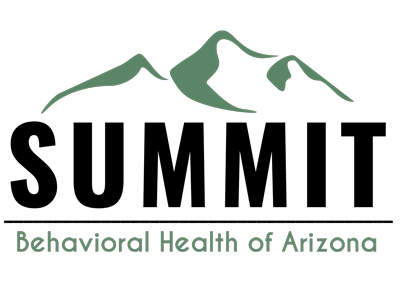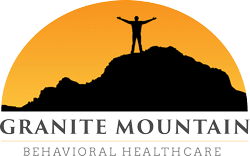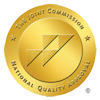Secondary traumatic stress is the emotional distress that occurs when an individual hears about the first-hand trauma experiences of another. Secondary traumatic stress can also occur if an individual witnesses a traumatic event that is occurring to somebody else. The symptoms of secondary traumatic disorder are highly similar to those of PTSD (Post-Traumatic Stress Disorder).
Those struggling with secondary stress may find themselves re-experiencing personal trauma or notice the avoidance of triggers related to indirect trauma exposure. Individuals suffering from secondary stress may also experience alterations in memory and perception. Secondary traumatic stress is often experienced by mental health professionals and substance abuse counselors.
Substance abuse, addiction, and secondary traumatic stress can have a complicated relationship when they intertwine. High levels of stress increase the likelihood that an individual will turn to drugs or alcohol as a means of escape. Drugs can temporarily increase pleasure, decrease anxiety, and provide a distraction from painful emotions. However, the consequences are dangerous and fatal.
Stress triggers levels of GABA (gamma-aminobutyric acid produced by the brain) to lower, causing adrenaline to increase. GABA can also be stimulated by drugs that suppress the central nervous system, such as opioids and alcohol. Individuals suffering from high levels of stress may turn to drugs for a “quick fix.” Especially when an individual is severely stressed, they may become desperate for anything to alleviate their pain.
Who is Most Often Affected by Secondary Traumatic Stress?
Secondary traumatic stress can be described as an occupational hazard for professionals working with those dealing with mental health disorders and/or addiction. It can be difficult for mental health professionals and substance abuse counselors to separate their patient’s pain from their own.
Research has shown that 6% to 26% of therapists working with traumatized populations, and up to 50% of child welfare workers, are at high risk of secondary traumatic stress, as well as PTSD.
However, doctors, nurses, first responders, and the loved ones of an individual suffering from trauma are all at risk for developing secondary traumatic stress. We mustn’t overlook these individuals. Those who give the most support are often in need of it just as much.
Mental Health Care/Social Workers
Mental health care and social workers dedicate their time to helping individuals overcome trauma or work through their internal battles. They’re exposed to the pain of their patients, which isn’t always easy to process. It is no easy task to separate yourself from your patients and the troubles that you hear every day. This can consequently lead to secondary traumatic stress.
Furthermore, these mental health professionals don’t always allow themselves to process the stories they hear. Professionals who are not trained to identify or manage STS-related symptoms can become overwhelmed and less effective at their jobs.
Medical Staff: Doctors and Nurses
Pain, loss, disability, chronic illness, and failure to achieve relief from symptoms are all aspects of medical care that doctors and nurses experience every day. In a study done on PTSD in intensive care units, nurses described the situations triggering secondary traumatic stress.
These included seeing patients die, patient aggression, involvement with end-of-life care, verbal abuse from family members, open surgical wounds, massive bleeding, not being able to save a specific patient, and much more.
Doctors and nurses may develop secondary traumatic stress after exposure to such difficult situations. Oftentimes, they may feel like they don’t have the opportunity to heal themselves because of their focus on other individuals.
First Responders
First responders are repeatedly exposed to severe trauma. Repeated exposures, in conjunction with their intense role in emergency services, can lead to secondary traumatic stress. First responders become more likely to experience distress, worry, disturbed sleep or concentration, alterations in work function, difficulties with interpersonal relationships, depression, and increases in substance use.
The first responders of our nation are first at the scene in many traumatic events. They must take action in these circumstances, thus not having time to process the event itself.
Family Members of Someone Suffering from Trauma
Secondary traumatic stress has serious effects on families, couples, and the loved ones surrounding someone suffering from trauma. When supporting a loved one, we can sometimes forget to attend to our own needs. Secondary traumatic stress can occur when we overly identify with the individual’s pain and stress.
Empathy is a huge part of being a human and understanding somebody else’s struggles. However, it can also come at the cost of your mental health when you become engulfed in the other person’s situation.
Signs and Symptoms of Secondary Traumatic Stress
Recognizing symptoms of secondary traumatic stress can help you to seek help sooner rather than later. Fortunately, being aware of these signs is half the battle. Once you become self-aware, taking action is the next step.
Many people suffer from a lack of understanding that there’s an issue at hand. Even more so, many allow their symptoms to get worse and procrastinate in acknowledging what’s bringing them pain.
The effects of secondary traumatic stress range from mild to severe. Although each patient is unique, you can lookout for the following symptoms of secondary traumatic stress:
- Emotional — overwhelming feelings of hopelessness, or even the opposite, feeling distant and detached from reality.
- Physical — feeling exhausted, unmotivated and overall tired.
- Behavioral — bad habits start forming that may be self-destructive in nature, such as substance abuse.
- Professional — sense of overall job fulfillment is low, responsibilities and tasks are not being satisfied as they normally would be-if at all.
- Cognitive — overall confusion, difficulty concentrating, and inability to make decisions, experiencing traumatic images, which is repeatedly seeing/reliving events.
- Spiritual — losing faith in humanity and higher power or life satisfaction.
- Interpersonal — losing interest and actively avoiding or becoming emotionally unavailable to the people you work with or your loved-ones.
If you’re experiencing any of these symptoms, don’t hesitate to reach out to our addiction and trauma specialists today.
Secondary Traumatic Stress and Addiction
“More than 60% of helping professionals have a trauma history of their own—we enter the field to make a difference, to give back, and share from our own life experiences,” as stated by a counselor in a secondary traumatic stress study.
Many mental health professionals are inspired to help others after experiencing their pain and trauma. It becomes tricky when these mental health professionals are repeatedly exposed to trauma from their patients. This can also apply to the loved ones of someone battling with substance abuse or trauma, doctors, nurses, first responders, as well as other fields.
Consequently, this can lead to substance abuse and addiction amongst the professionals striving to help others. Chronic stress can negatively impact a person’s impulse control, learning, and memory functions. As a result, drugs can become a coping mechanism or a method of self-medication for the symptoms of secondary traumatic stress.
It is important to note that secondary traumatic stress and substance abuse is classified as a dual diagnosis. This is because STS is still a form of trauma. When accompanied by addiction, two disorders must be recognized and treated.
Treatment Options for Secondary Traumatic Stress
The great upside is that there is treatment available to those suffering from this condition. No matter how lost you feel, there’s potential to feel much better. With the right resources and care, you’ll be able to overcome the obstacles setting you back.
Dual Diagnosis Treatment
Dual diagnosis treatment targets secondary traumatic stress and drug or alcohol addiction simultaneously. You’ll be working with mental health professionals and addiction experts who understand your unique situation.
Dual diagnosis makes sure to treat both sides of the equation. Failing to acknowledge both parts of the issue will result in inadequate treatment.
Addiction Treatment
The severity and type of addiction you’re experiencing will play a part in the exact type of treatment that you’ll be receiving. Most treatment programs for addiction begin with some form of detox to clear alcohol and other drugs from the body.
More severe addictions call for an inpatient or residential treatment. Partial hospitalization provides a moderate level of care, and outpatient treatment provides the lowest level of care. After a thorough evaluation of your condition, we’ll decide together what type of care will suit your recovery best.
Mental Health Treatment
Addiction is a disease that affects the person from the inside out. It is crucial to treat the underlying roots of addiction, in conjunction with the cravings and temptations. The ability to simultaneously work through any mental health hurdles returns the power in your hands
With our team of trained therapists, you’ll learn coping strategies and address any toxic behavioral patterns.
Therapy Options
There are several types of psychotherapy used to treat secondary traumatic stress disorder. These therapies include:
- Cognitive therapy. This type of talk therapy helps you recognize the ways of thinking (cognitive patterns) that are holding you back,
- Exposure therapy. This behavioral therapy helps you safely face both situations and memories that you find traumatizing so that you can learn to cope with them effectively.
- Eye movement desensitization and reprocessing (EMDR). EMDR combines exposure therapy with a series of guided eye movements that help you process traumatic memories and change how you react to them.
Long Term Recovery Options for Secondary Traumatic Stress and Addiction
Recovery from secondary traumatic stress and substance abuse doesn’t stop when a treatment period ends. Aftercare is a crucial part of the recovery journey. Aftercare is continued treatment after the “core” program is completed. There are many different kinds of aftercare treatment options to prevent relapse and expand upon the coping strategies.
Options for aftercare include:
- Outpatient treatment: The individual resides at home while attending treatment a few times a week at a convenient schedule.
- Support groups/Group counseling: The patient will listen to and share experiences associated with addiction and secondary traumatic stress. Individuals will work to build social and coping skills in an encouraging group setting.
- Individual therapy: The patient will meet one-on-one with a therapist to continue progress established during the primary treatment program.
- 12-step programs: Fellowship programs, such as Alcoholics Anonymous (AA) and Narcotics Anonymous (NA), provide support and motivation for the individual as they recover.
Get Help Today!
We encourage you to seek help today if you’re suffering from secondary traumatic stress. From an on-site medical staff to comfortable amenities, we have everything you need for a smooth recovery.
We aim to create a better future for our patients. We pride ourselves on having a truly caring staff that promotes a community of encouragement and hope. Each patient will be a part of our family here at Granite Mountain.
Whether it’s you or a loved one struggling, one of our treatment programs can help today. From individual therapy to medical care, treatment will be tailored to your unique needs. Reach out to us by contacting us here.
References:
http://neatoday.org/2019/10/18/secondary-traumatic-stress/
https://www.acf.hhs.gov/trauma-toolkit/secondary-traumatic-stress
https://www.ncbi.nlm.nih.gov/pmc/articles/PMC4549333/
http://www.apnc.org/wp-content/uploads/2015/01/Vicarious-Trauma-and-the-Substance-Use-Disorder-Counselor.pdf (Link no longer available)
https://www.ncbi.nlm.nih.gov/pmc/articles/PMC5808160/
https://www.samhsa.gov/sites/default/files/dtac/dialogue-vol14-is1_final_051718.pdf
https://nursing.ceconnection.com/ovidfiles/00043860-201703000-00009.pdf



